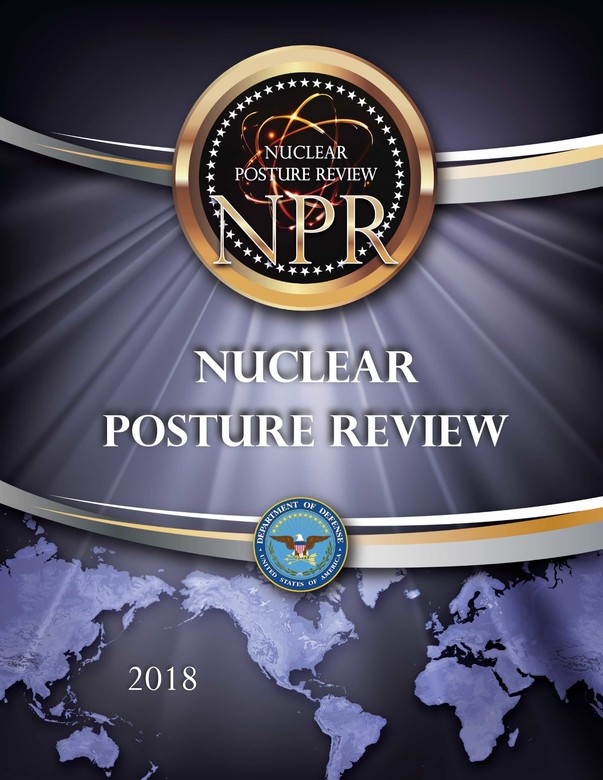WASHINGTON —The world has changed and America’s nuclear strategy has to change as well, the deputy undersecretary of defense for policy said here today.
David J. Trachtenberg told a Mitchell Institute for Aerospace Studies seminar on Capitol Hill that the Nuclear Posture Review unveiled earlier this year had to incorporate the vast changes the world has seen since the last review in 2010.
“The 2018 NPR’s analysis and recommendations are grounded in a realistic assessment of today’s strategic environment,” Trachtenberg said. “That is one that recognizes that a much more challenging nuclear threat has emerged since the last Nuclear Posture Review was conducted in 2010.”
At that time, he said, the review was based on assumptions that have proven false. The premise behind the 2010 review was that the chances of a confrontation involving the United States, Russia or China were substantially lower than they were during the Cold War. There was even the idea then that United States, Russia and China could work together and possibly eliminate nuclear weapons altogether, he noted.
“The 2010 NPR asserted that engagement could result in greater Russian and Chinese restraint in their nuclear postures and programs, which would reassure and stabilize the regions,” he said. The NPR stated that if the United States reduced the role and numbers of U.S. nuclear weapons, then the rest of the world would move in the same direction, he added.
That, obviously, did not happen.
This meant there had to be tailored changes to U.S. nuclear policy even while remaining consistent with many long-standing principles of U.S. nuclear policy, the undersecretary said.
Great Power Competition
Today, America faces the re-emergence of great power competition among the United States, Russia and China. The United States also must face nuclear challenges from rogue states such as Iran and North Korea.
Russia is modernizing its nuclear stockpiles and capabilities. Russian officials said that 80 percent of Russia’s strategic nuclear forces have now been modernized. More disturbing is new Russian doctrine that seems to support the idea that they can use nuclear weapons as practical tools for gaining tactical advantage on the battlefield, escalation control and during conflict termination.
“Rather than reducing the salience of nuclear weapons, the Russian leadership has made explicit threats, brandishing their nuclear weapons in a way that we arguably have not seen in a generation,” Trachtenberg said.
China is also expanding its nuclear capabilities in quality and quantity, he said. The Chinese have new missiles, new cruise missiles, new submarines and new mobile ICBM launchers.
North Korea is a bit more complicated, and Trachtenberg said the willingness of North Korean leader Kim Jong Un to meet President Donald J. Trump may represent a “historic window of opportunity.”
“But we must nevertheless, proceed soberly, given North Korea’s history of noncompliance with negotiated agreements,” he added.
Iran’s status remains uncertain, he said. The rogue nation continues missile testing against U.N sanctions and continues to extend malign influence throughout the Middle East.
In contrast, the United States has not built any new systems for 20 years and has reduced its nuclear arsenal by 85 percent since its Cold War peak.
Ensuring No Miscalculation
The 2018 review takes all this under consideration and maintains the traditional deterrence strategy with some tweaks to ensure there is no miscalculation of America’s intent, Trachtenberg said. “The NPR re-establishes deterrence of nuclear attack against us, our allies and partners as the top priority of U.S. nuclear policy,” he told the seminar audience.
The Nuclear Posture Review will continue to contribute to American nonproliferation goals by maintaining support for the Nuclear Non-Proliferation Treaty and sustaining the extended deterrent for allies, Trachtenberg said, noting that they do not need their own nuclear weapons.
The review clarifies U.S. “declaratory policy,” which is that the United States will consider the use of nuclear weapons only in response “toextreme circumstances that threaten our vital interests.” The review says the attack could be nuclear or non-nuclear, “but there is nothing automatic about a prospective U.S. response,” Trachtenberg said. “We always maintain the option of responding to any aggression at a time and place, and a means of our choosing,” he added.
This move does not expand the circumstances for use of nuclear weapons, nor does it lower the bar to nuclear use, he said. “It is intended to enhance deterrence and raise the threshold by reducing the potential for adversary miscalculation,” he explained.
The goal of the review’s capability recommendations is to tailor U.S. deterrence strategy to shape potential adversaries calculations, ensuring they do not see employment of nuclear weapons as a useful option under any circumstances, the undersecretary said.
The cost of modernization is steep – by some estimates, up to $1.2 trillion – but it is a pittance if deterrence fails and nuclear weapons are used, Trachtenberg said. The whole goal of the Nuclear Posture Review, he added, is to ensure that deterrence does not fail.


